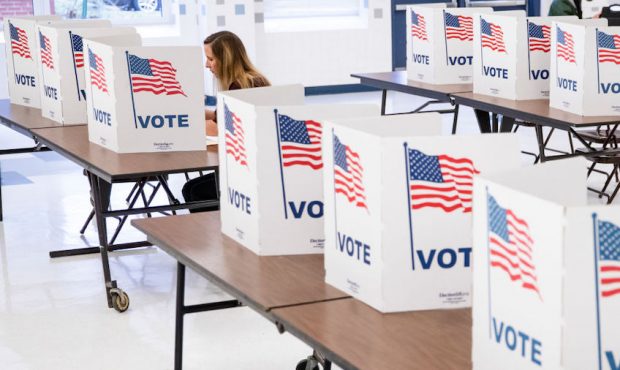Gephardt: If Your Ballot Signature Doesn’t Match, Will Your Vote Count?
Oct 12, 2020, 10:21 PM | Updated: Oct 13, 2020, 12:10 am
SUMMARY: When you vote by mail, the election office knows it’s you based on your signature. But what if your signature has changed? KSL’s Matt Gephardt investigated the process of validating your vote so you can make sure your vote counts.
SALT LAKE CITY, Utah – We are less than a month away from election day and ballots will start arriving in Utah mailboxes this week. But as Utahns get ready to cast their votes, there is an important thing they need to know to make sure their vote counts.
If you plan to vote by mail, election officials will verify your identity by looking at your signature. Election officials compare the signature on your ballot to the one you have on file with the state, likely from your driver’s license.

Mail-in ballots from past elections at the Salt Lake County Clerk’s Office. (KSL-TV)
The KSL Investigators were given access to the secure voting area run by the Salt Lake County Clerk to see the process.
When ballots come in, they are sorted by one of two Audience Response Systems machines. During the sorting, every ballot is scanned by the machine, which compares signatures.
Salt Lake County Chief Deputy Clerk Lannie Chapman said the machine is programmed to be picky.

Salt Lake County Chief Deputy Clerk Lannie Chapman points to a camera that scans signatures on Utahns’ ballots. (KSL-TV)
“If the signature does not look like an identical match, it does reject it, and it has to go to human eyes,” she said.
Those checks are done digitally. A photo of the ballot signature is paired with the signature on file and both are sent to a clerk staffer for further review.

Each ballot is scanned by one of two Audience Response Systems machines to make sure signatures match. (KSL-TV)
Chapman told KSL the machine has been known to flag as many as 70% of ballots for signatures that do not match. Chapman said it is virtually never fraud. Most of the time it is the actual voter who signed their affidavit, but the signature was just a bit off.
Studies, like one published in the Journal of Forensic Science, show that with age, “there is decline in cognitive and sensorimotor function affecting fine motor control.”
In English, people’s signatures change over time.
Other votes are nulled after honest mistakes, like a husband who signed his wife’s ballot by accident. In those cases, a new ballot is mailed out, time permitting, or the voter is told to head to a polling place and vote in-person, Chapman said.

People’s signatures change over time, and some ballots are rejected after honest mistakes. (KSL-TV)
Election officials go through training and are given tools to compare signatures. They can usually tell whether the person who signed is the voter.
“We know when you do a loop, where you might pause or where you don’t pause,” she said.
Either way, they err on the side of caution and follow-up with any voters whose signatures match less than 90%.
“When your signature does not match the signature that we have in your voter records, we will send you a cure letter,” Chapman said. “That cure letter will say, ‘Hey, your signature does not match. You have a chance to cure this to still be able to have your voice counted, to have your ballot counted.’”
All ballots must be in by election day, but election officials can continue to verify signatures until the end of the canvas period, which in 2020 is November 17.

A Salt Lake County drop-off ballot box. (KSL-TV)
If your signature does not match and it isn’t straightened out by then, your vote will not be counted. If that gives you pause, vote early or vote in-person.
Chapman encouraged people to vote by mail saying her office is “very confident in the system.”
Chapman said if an instance arose where fraud was suspected, the matter would be handed over to the Salt Lake County District Attorney’s office.
















